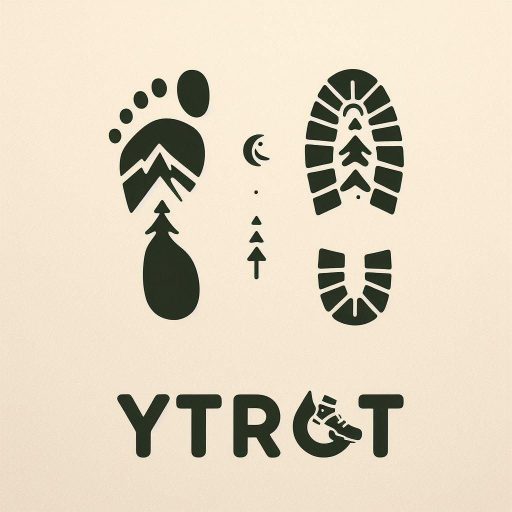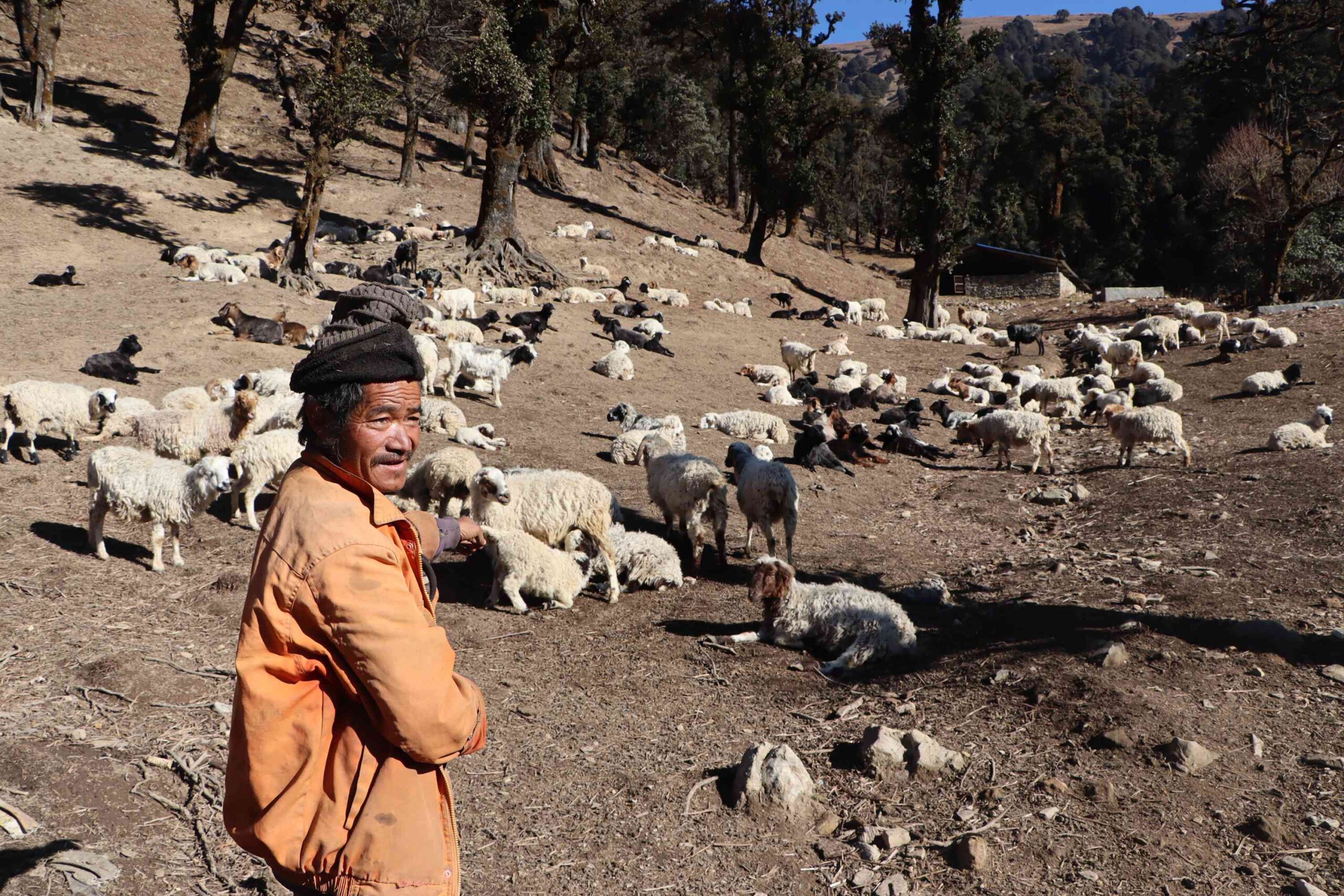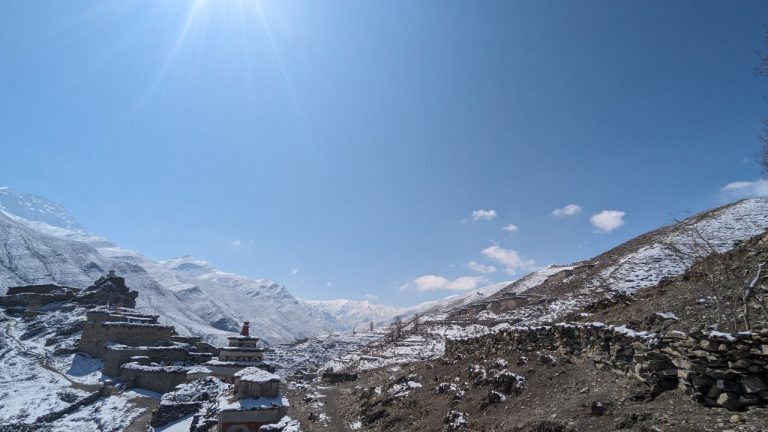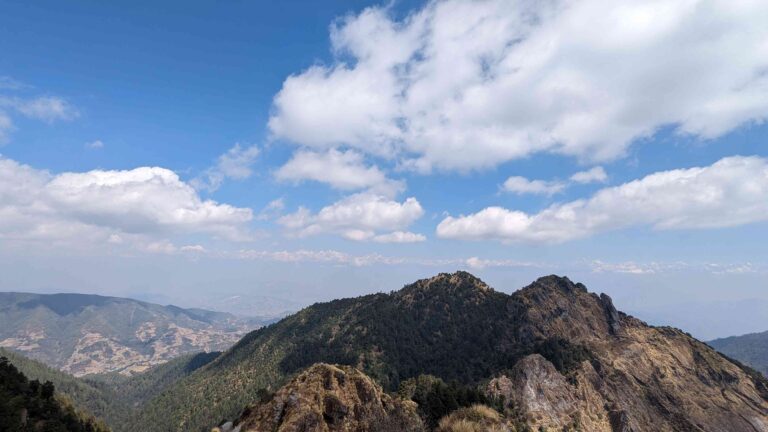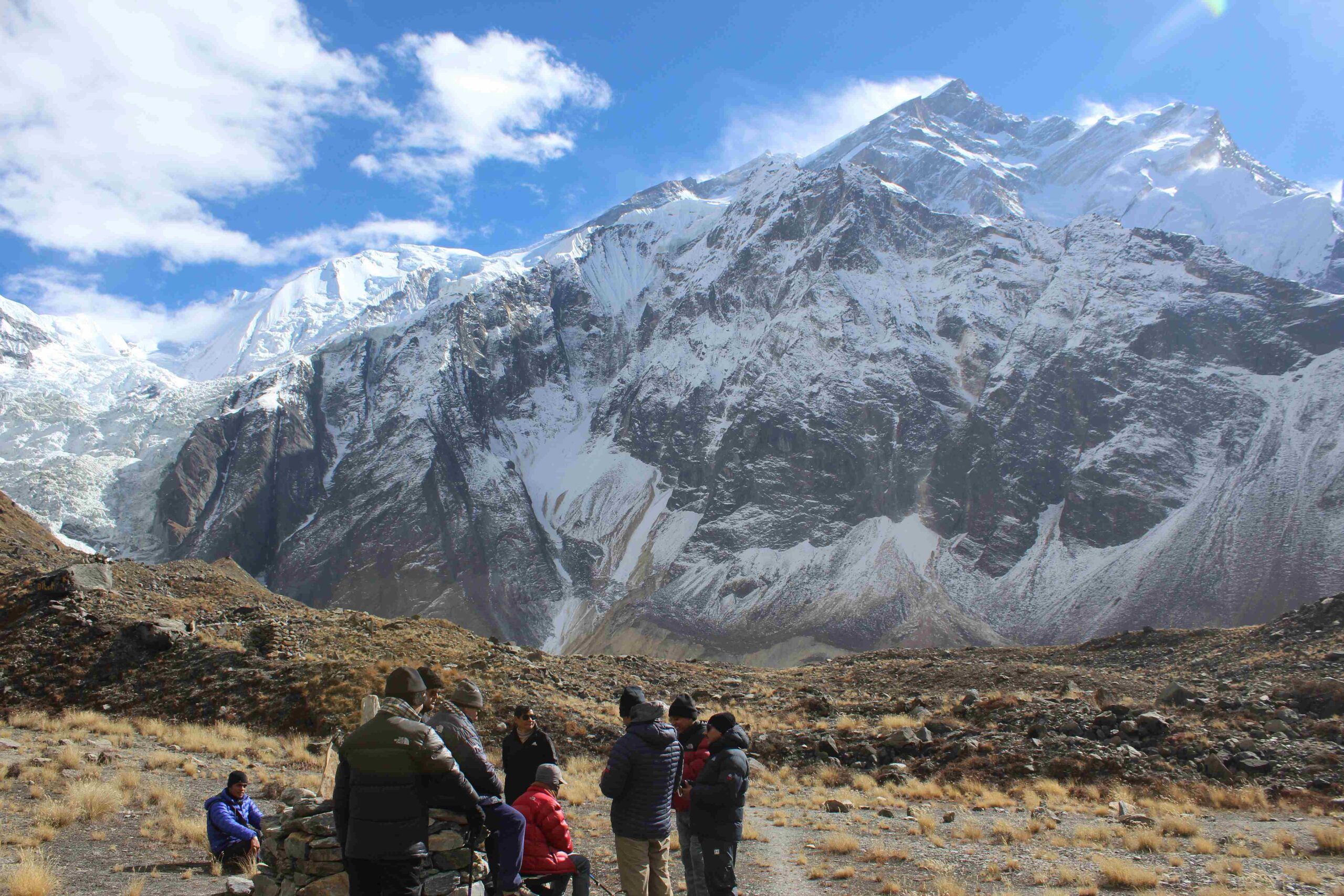Nestled 3,100 meters above sea level, the serene landscapes of Dhorpatan in Baglung, Nepal, tell a timeless story of resilience and tradition. In the chill of December, as white snow blankets the bare hills, a group of shepherds, with decades of tradition coursing through their veins, tend to a thousand-strong herd of sheep and goats near Madhyapahari Lokmarg.
For generations, the borders of Baglung, East Rukum, and Rolpa remained untouched, a domain solely for sheep herders from these districts. A decade ago, the area was desolate, and the public road lay unused. However, today, the highway echoes with the daily hustle of vehicles, oblivious to the shepherds’ rhythmic care for their flocks.
In the Patihalne area, where Shri Prasad Pun, Jorprasad Pun, Sat Gurung, and Ras Gurung reside, the cold season brings a unique challenge. The recent snowfall, coupled with rain, tested their endurance for three days. Now seeking shelter, these families with their vast herds remain, clinging to the ancient profession of sheep and goat rearing.
Prasad, 61, has tended to his flock for 53 years, following the footsteps of his forebears. Despite the challenges, he remains steadfast, echoing the sentiment shared by many shepherds in the region. The younger generation, however, shows a declining interest in this traditional way of life, prompting concerns about the survival of an age-old profession.
Gurung, reminiscing about a time when the village thrived on animal husbandry, expresses fear of losing this heritage. He points to the impact of modernization, migration, and changing market dynamics that have cast a shadow on the once-flourishing profession.
As the older generation perseveres, Jos Jangar, despite his advancing age, exemplifies the undying spirit of a shepherd. Yet, the fading interest among the youth raises questions about the sustainability of this vocation.
In the face of development, Gurung reflects on the disappearing barns, cattle ranches, and shepherds. He acknowledges the ease brought by daily vehicular traffic but laments the potential loss of a traditional way of life. “We got used to living in this cold. We endure snow and rain, and now the sheep are dying. The old profession is disappearing due to development,” Gurung says with a hint of nostalgia.
Jor Prasad Pun, with more than three decades of experience, believes that sheep rearing has prevented many from seeking opportunities abroad. He emphasizes the importance of embracing traditional professions and maintaining a connection to the roots, resisting the allure of urban life.
In the words of Pun, “No matter where you go, you have to work. It’s not easy to earn money. It’s better to be the owner and shepherd the sheep than to be the slave of others.”
As the shepherds of Dhorpatan navigate the challenges of changing times, their story stands as a poignant testament to Nepal’s rich heritage, where tradition and transition coexist on the windswept hillsides.
